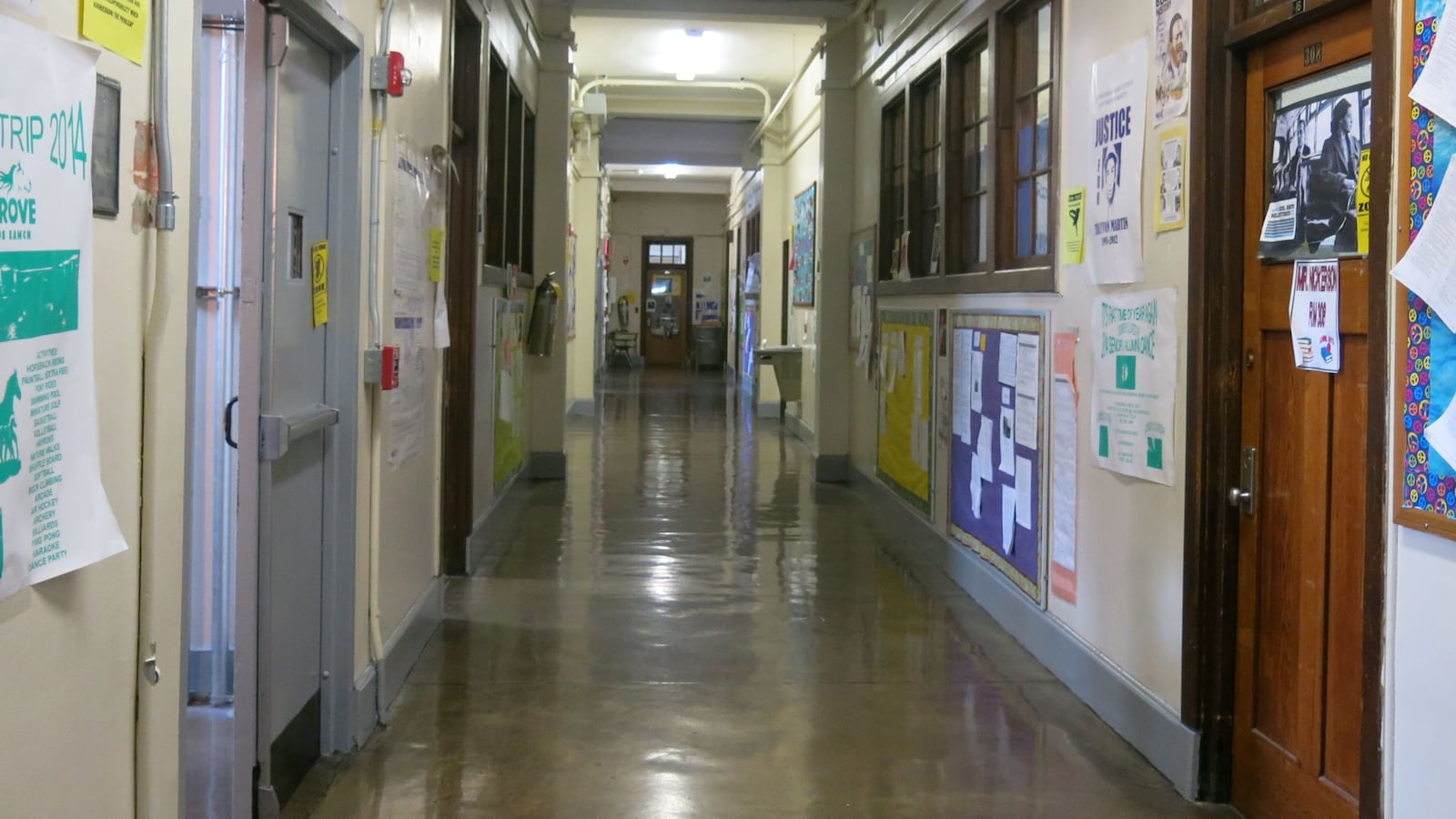City education officials aren’t backing away from a pledge to not force additional schools to share space, even in the face of a new law that will make that a pricey proposition.
This week, a top city education official said that Chancellor Carmen Fariña has given orders not to make any space-sharing plans until the city has come up with better ways to get feedback from community members. Fariña wants future co-locations to happen only when they “come from the community and are not imposed on them,” Deputy Chancellor Kathleen Grimm said at a City Council hearing.
The statement from Grimm, the department’s longtime school facilities chief, signaled that the de Blasio administration remains committed to limiting future co-locations. (A department spokeswoman later said that a new process would solicit more community feedback, but that the city would still come up with its own proposals.)
Together, the statements outline the difficult position that Mayor Bill de Blasio will soon find himself in, given the continued growth of charter schools—which city officials do not control—and new charter school legislation, which will make co-locations financially advantageous.
“The governor has presented the mayor with a Hobson’s choice: spend money on facilities or disrupt schools daily through co-location,” said Brooklyn College Education Professor David Bloomfield.
The new law requires the city to provide new charter schools with free space inside the city’s own buildings or public funding to cover rent in a private facility. The legislation is a rebuke from state lawmakers of de Blasio’s criticism of charter schools during the mayoral campaign and his early months in office.
One challenge the law poses for de Blasio is that it makes financial sense to keep charter schools in city buildings. If the city doesn’t provide space, the law provides for charters to receive an extra funding allowance for each student, which in 2015 would be $2,775, from the city.
Thirteen charter schools have already been approved to open that year, serving 2,000 students at first and 5,800 at full capacity. Private space for those schools would cost as much as $5 million in the 2015-16 school year and $16 million once they are all at capacity, based on enrollment estimates.
In addition, the city is planning to spend $5.4 million next year for three displaced Success Academy schools, which will have fewer than 500 students next year, to operate in Catholic school buildings.
Many of the schools approved to open in 2015 originally told their authorizers that they were planning to find, and pay for, private space, but the new legislation is likely to change those calculations. Vasthi Acosta, head of Amber Charter School, said the school’s board will consider requesting city space or funding for their newly approved second school.
The other option for de Blasio—siting all of the new charter schools in public school buildings—is likely to be a hard sell to communities.
Charter school co-locations, which make up about 10 percent of co-locations citywide, have frequently stirred resentment from parents and staff members at traditional public schools—some of which have been required to downsize to make room in their buildings. Bloomberg’s critics saw the encroachment as symbolic of his eagerness to supplant the traditional public education system with privately-run charter schools.
Some co-locations also cause major inconveniences. Schools have had to use auditoriums for storage and closets for classrooms, conditions that may violate students’ state constitutional rights, the Campaign for Educational Equity argued in a new research brief.
But supporters of the co-location policy also see it as an innovative—albeit imperfect— way to deal with New York City’s unavoidable space-crunch. And they point to a body of research that links the small schools and charters, which co-locations often made possible, to improved academic outcomes for students.
David Umansky, CEO of Civic Builders, a nonprofit that helps develop private space for charter schools, said he believes there is enough space in the system’s 1,200 buildings to responsibly add new schools. The question is, he added, how much the administration is willing to “deal with difficult issues with the communities.”
For a mayor who has promised to build consensus around major school planning decisions, and wants to keep money in the traditional school system, neither option is a clear win.
That leaves de Blasio and Fariña focused on changing a co-location decision-making process they have said is in serious need of repair.
To fix it, they have created two working groups whose members include several charter school leaders, including KIPP Founder Dave Levin. (Umansky is part of one.) Their charge is to identify ways to change to how school space is measured and allotted in the city’s yearly building utilization report, known as the “blue book,” and improve the public review process.
Some cosmetic changes are coming soon. Lorraine Grillo, CEO of the School Construction Authority, said at the hearing this week that it would be released earlier to give officials more planning time and be more “user-friendly” than previous versions. Substantive tweaks to the way school space is calculated won’t happen until next year, Grillo said.
Still, not all charter school co-locations are contentious. At the John F. Kennedy Campus, the two New Visions charter schools are seen as good neighbors by people working in the building’s six other high schools.
“People say, how do the charter schools and the district schools co-habitate so happily?” Karalyne Sperling, a principal in the building. She says it’s because most of the schools are associated with New Visions, a non-profit that also provides support to district schools.
“We have so many people that we know in common that it makes us more friendly toward each other and work things out,” Sperling added.
Follow Chalkbeat on Twitter for the latest New York City schools news.


